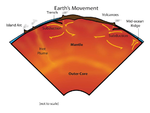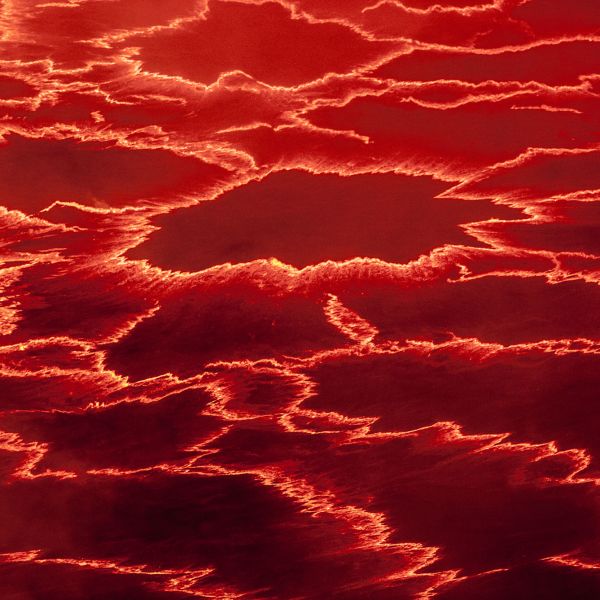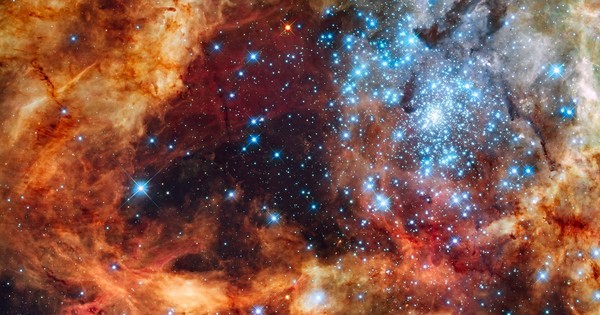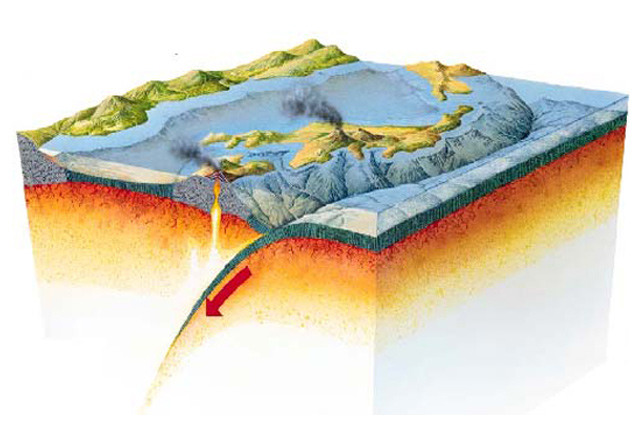If we lived within the dielectric of a capacitor, what net voltage would we measure? Wouldn't it always appear to be neutral?
Where does the energy of earthquakes come from????
Page 2 - For the science geek in everyone, Live Science breaks down the stories behind the most interesting news and photos on the Internet.
You are using an out of date browser. It may not display this or other websites correctly.
You should upgrade or use an alternative browser.
You should upgrade or use an alternative browser.
In short, I can tell you this: We are essentially living inside a huge capacitor. And this is not just on the scale of our planet, but also on the scale of our universe. As soon as there is an overload somewhere in the Earth's crust and the Universe, this capacitor equalises the voltage. You can find out more in my article -If we lived within the dielectric of a capacitor, what net voltage would we measure? Wouldn't it always appear to be neutral?
Seismic Processes in the Light of the Second Law of Thermodynamics and the Evolution of the Universe
Seismic Processes in the Light of the Second Law of Thermodynamics and the Evolution of the Universe
The article deals with seismic processes from the point of view of the second law of thermodynamics. In recent years, more and more scientists have come to the
papers.ssrn.com
I don't know much about earth's innards. But I do wonder. We discovered years ago about the charge fields and magnetic fields around our planet. Our bore holes indicate that our planet is saturated with high temp, high pressure water. This means a large ionic solution. Allowing current and charge alignment and separation potentials.
We are still learning the important affects of out external planetary fields. I wonder what affects this internal circuitry has on our systems.
Hydrothermal waters create, deliver, and rearrange minerals. They are loaded with sulfides or chlorides, they become a little acidic and will dissolve metals and precipitate them out while cooling. All depositions are not the same model or compounds.
I don't recall ever hearing about underground subing out work to the atmosphere.
Reading the conventional explanations it occurred to me that no one ever mentions the cause of ocean tides at the surface of earth.
They are caused by the gravitational forces exerted on the earth by the moon, and to a lesser extent, the sun.
Why should these gravitational effects stop at the surface? If the magma of the inner earth is fluid, why should it not also be subject to gravitational influences?
They are caused by the gravitational forces exerted on the earth by the moon, and to a lesser extent, the sun.
Why should these gravitational effects stop at the surface? If the magma of the inner earth is fluid, why should it not also be subject to gravitational influences?
Of course, the tides deform the Earth's crust and thereby transfer to it the elastic energy of deforming rocks, just as they do to magma. But this energy, according to the law of thermodynamics, is dissipated (a stone heated by the sun during the day is bound to cool down at night and take the temperature of the environment).Reading the conventional explanations it occurred to me that no one ever mentions the cause of ocean tides at the surface of earth.
They are caused by the gravitational forces exerted on the earth by the moon, and to a lesser extent, the sun.
Why should these gravitational effects stop at the surface? If the magma of the inner earth is fluid, why should it not also be subject to gravitational influences?
But the main thing is not this, but that gravitational interactions are negligible compared with interatomic interactions, which means that the main role in the process of earthquakes is played by the interaction between atoms and molecules.
I am not speaking of ocean tides causing deformation.Of course, the tides deform the Earth's crust and thereby transfer to it the elastic energy of deforming rocks, just as they do to magma. But this energy, according to the law of thermodynamics, is dissipated (a stone heated by the sun during the day is bound to cool down at night and take the temperature of the environment).
But the main thing is not this, but that gravitational interactions are negligible compared with interatomic interactions, which means that the main role in the process of earthquakes is played by the interaction between atoms and molecules.
I am talking about gravity causing deformation of the fluid magma and causing internal (tidal) stresses in addition to the thermal influences.
I would not discount gravity as negligible if gravity can move ;
321,003,271 cubic miles of ocean water over a considerable distance and depth every 6 hours.
According to the U.S. Geological Survey, there are over 332,519,000 cubic miles of water on the planet. A cubic mile is the volume of a cube measuring one mile on each side. Of this vast volume of water, NOAA's National Geophysical Data Center estimates that 321,003,271 cubic miles is in the ocean. Feb 26, 2021

How much water is in the ocean?
About 97 percent of Earth's water is in the ocean.
oceanservice.noaa.gov
and
How much energy is in an ocean wave?
Wave power has far greater energy density than wind or solar. It generates up to 24-70 kW per meter of wave, with peak near-shore power ranging from 40-50 kW per meter. The world's total wave resource has been estimated to be as much as 2 terawatts (TW) of energy— the equivalent of world's electricity consumption. May 20, 2021

The Potential of Wave Power | JD Supra
Wave power is a type of hydroelectric power that relies on the capture of energy held by ocean waves. Like wind and solar power, wave power has the...
If this gravitational energy is also present at greater depths than at the surface, could it cause a slight shift in the fluid magma at greater depths and have an effect, however slight?
Last edited:
You are missing one point. According to the laws of mechanics, a body must change shape or size in order to produce strain energy. Since magma has no free surface and is in a confined space, no deformation energy can be formed. Do you agree with me?I am not speaking of ocean tides causing deformation.
I am talking about gravity causing deformation of the fluid magma and causing internal (tidal) stresses in addition to the thermal influences.
If this gravitational energy is also present at greater depths than at the surface, could it cause a slight shift in the fluid magma at greater depths and have an effect, however slight?
I think it is a little more complex than what you present. Magma certainly deforms the earth'sYou are missing one point. According to the laws of mechanics, a body must change shape or size in order to produce strain energy. Since magma has no free surface and is in a confined space, no deformation energy can be formed. Do you agree with me?
crusts. Volcanos are created from pressure in the magma field .
Magma's Role in the Rock Cycle

How Magma FormsMagma is extremely hot—between 700° and 1,300° Celsius (1,292° and 2,372° Fahrenheit). This heat makes magma a very fluid and dynamic substance, able to create new landforms and engage physical and chemical transformations in a variety of different environments.
Earth is divided into three general layers. The core is the superheated center, the mantle is the thick, middle layer, and the crust is the top layer on which we live.
Magma originates in the lower part of the Earth’s crust and in the upper portion of the mantle. Most of the mantle and crust are solid, so the presence of magma is crucial to understanding the geology and morphology of the mantle.
Decompression MeltingDifferences in temperature, pressure, and structural formations in the mantle and crust cause magma to form in different ways.
Decompression melting involves the upward movement of Earth's mostly-solid mantle. This hot material rises to an area of lower pressure through the process of convection. Areas of lower pressure always have a lower melting point than areas of high pressure. This reduction in overlying pressure, or decompression, enables the mantle rock to melt and form magma.
Decompression melting often occurs at divergent boundaries, where tectonic plates separate. The rifting movement causes the buoyant magma below to rise and fill the space of lower pressure. The rock then cools into new crust.
Decompression melting also occurs at mantle plumes, columns of hot rock that rise from Earth’s high-pressure core to its lower-pressure crust. When located beneath the ocean, these plumes, also known as hot spots, push magma onto the seafloor. These volcanic mounds can grow into volcanic islands over millions of years of activity.

Magma's Role in the Rock Cycle
Magma is a mixture of molten and semi-molten rock found beneath the surface of the Earth.
Magma pressure in the depths of the Earth plays no role in gravitational tides. If the waters of the oceans have a huge free surface and the ability to move huge distances in the tidal cycle, the magma is in a confined space and it is immobile. As you could judge from my article:https://forums.livescience.com/threads/why-cant-earthquakes-and-asteroids-destroy-the-earth.9774/ there magma plays the main role in dampening the energy of earthquakes. Look at the article again and you will see that.I think it is a little more complex than what you present. Magma certainly deforms the earth's
crusts. Volcanos are created from pressure in the magma field .
Apparently there are several different viewpointsMagma pressure in the depths of the Earth plays no role in gravitational tides. If the waters of the oceans have a huge free surface and the ability to move huge distances in the tidal cycle, the magma is in a confined space and it is immobile. As you could judge from my article:https://forums.livescience.com/threads/why-cant-earthquakes-and-asteroids-destroy-the-earth.9774/ there magma plays the main role in dampening the energy of earthquakes. Look at the article again and you will see that.
John Waldeck , former Aerospace WorkerOriginally Answered: Does the moons gravitational pull effect earths magna?
Answered Jun 21, 2019
It does. In fact, it affects the continents also - while ocean tides can rise and fall 20 feet in a few hours, the ground beneath your feet can rise and fall up to a foot due to the moon’s (and sun’s) tidal effects - which also acts on the magma below the crust.

Does the moon’s gravitational pull affect Earth’s magma?
Answer (1 of 4): Of course, but everything is a matter of degree. Let consider magma volume at radius R. The influence of the Moon has to be compared with the influence of Earth Gravitation Pull by all the matter below radius R and the weigh of all the matter above the radius R. Hence, it shou...
First, the amount of ocean water and magma inside the Earth's crust are incomparable. It is like a drop of water in the Pacific Ocean, hence the tidal forces will be incomparable. They are several orders of magnitude smaller. Secondly, as there is little magma in the Earth's crust and its mass is insignificant and it is stationary relative to the Earth, so it has no inertial forces. Thirdly, the rise of the Earth's crust by 20-30 inches. The depth of the rise of the crust is only a few km and the rise of the crust occurs melodically and gradually, step by step on the surface, forming a slowly rolling wave, the energy of which relaxes instantly.Apparently there are several different viewpoints
WOW!
Does the moon’s gravitational pull affect Earth’s magma?
Answer (1 of 4): Of course, but everything is a matter of degree. Let consider magma volume at radius R. The influence of the Moon has to be compared with the influence of Earth Gravitation Pull by all the matter below radius R and the weigh of all the matter above the radius R. Hence, it shou...www.quora.com
Well, it looks like you are answering your own questions. The earth is apparently quite resilient and resists breakup from several internal stressors.Thirdly, the rise of the Earth's crust by 20-30 inches. The depth of the rise of the crust is only a few km and the rise of the crust occurs melodically and gradually, step by step on the surface, forming a slowly rolling wave, the energy of which relaxes instantly.
If you read my article carefully, you will find that the energy of earthquakes does not depend on such factors as: the energy of elastic deformation of rocks, and therefore on the tidal forces of the Moon and the Sun, on the composition of rocks and their strength properties, as Mr. Reid's theory of earthquakes Elastic Recoil states. Earthquake energy is the energy of the electromagnetic field, the carrier of which is a simple electron.Well, it looks like you are answering your own questions. The earth is apparently quite resilient and resists breakup from several internal stressors.
Humm..I always thought earthquake energy is kinetic energy.Earthquake energy is the energy of the electromagnetic field, the carrier of which is a simple electron.
Heat such as from magma would be EM energy, no?
Humm...Kinetic energy??? The answer is no. Imagine the very beginning of an earthquake with the plates standing still. What is their kinetic energy? It is 0. Only when the plates are in motion does kinetic energy appear. But then, what caused the plates to move? The answer is a charge in the form of an eletron.Humm..I always thought earthquake energy is kinetic energy.
Heat such as from magma would be EM energy, no?
Heat? The answer is, yes, heat, as a type of electromagnetic energy, may well be the energy of an earthquake.
Yes, ultimately all energy stems from the four fundamental forces. But I think this article describes the direct cause of earthquake phenomena.Humm...Kinetic energy??? The answer is no. Imagine the very beginning of an earthquake with the plates standing still. What is their kinetic energy? It is 0. Only when the plates are in motion does kinetic energy appear. But then, what caused the plates to move? The answer is a charge in the form of an electron.
Heat? The answer is, yes, heat, as a type of electromagnetic energy, may well be the energy of an earthquake.
What causes earthquakes?
What drives the movement of tectonic plates?Earthquakes are the result of sudden movement along faults within the Earth. The movement releases stored-up ‘elastic strain’ energy in the form of seismic waves, which propagate through the Earth and cause the ground surface to shake. Such movement on the faults is generally a response to long-term deformation and the buildup of stress.
Below the tectonic plates lies the Earth’s asthenosphere. The asthenosphere behaves like a fluid over very long time scales. There are a number of competing theories that attempt to explain what drives the movement of tectonic plates. Three of the forces that have been proposed as the main drivers of tectonic plate movement are:
- mantle convection currents: warm mantle currents drive and carry plates of lithosphere along a like a conveyor belt
- ridge push (buoyant upwelling mantle at mid-ocean ridges): newly formed plates at oceanic ridges are warm, so they have a higher elevation at the oceanic ridge than the colder, more dense plate material further away; gravity causes the higher plate at the ridge to push away the lithosphere that lies further from the ridge
- slab pull: older, colder plates sink at subduction zones because, as they cool, they become more dense than the underlying mantle and the cooler, sinking plate pulls the rest of the warmer plate along behind it
more......Research has shown that the major driving force for most plate movement is slab pull, because the plates with more of their edges being subducted are the faster-moving ones. However, ridge push is also presented in recent research to be a force that drives the movement of plates.

What causes earthquakes? - British Geological Survey
Earthquakes occur when the ground is subjected to so much force that it fractures or breaks. Most earthquakes are associated with tectonic plate boundaries. %
I think that ultimately all energy stems from dynamic interactions of fundamental physical values.
energy
physics
All forms of energy are associated with motion. For example, any given body has kinetic energy if it is in motion. A tensioned device such as a bow or spring, though at rest, has the potential for creating motion; it contains potential energy because of its configuration. Similarly, nuclear energy is potential energy because it results from the configuration of subatomic particles in the nucleus of an atom.

Energy | Definition, Types, Examples, & Facts
Energy, in physics, the capacity for doing work. It may exist in potential, kinetic, thermal, electrical, chemical, nuclear, or various other forms. There are, moreover, heat and work—i.e., energy in the process of transfer from one body to another. Learn more about energy in this article.
Last edited:
All you cited are false ideas of earthquake energy. Spit it out and forget it! The energy of Mr. Reid's elastic squeeze? What about the laws of mesanics: In order for elastic energy to form, a body MUST change shape and size???? Do tectonic plates change shape and size? What about the laws of thermodynamics that do not allow for the accumulation of elastic energy....mantle convection currents???? Not serious! The rate of plate movement is a few microns per year....ridge push??? even more unserious! The rate of mid-ridge formation is even slower than plate movement....slab pull??? Please give me the rate of plate sinking. No one knows that! Not a single person! So why do we claim that plate sinking is the cause of earthquakes? Because we want to? Read my article on the forum: https://forums.livescience.com/threads/spreading-as-a-process-of-crustal-evolution.8548/. Or my book:Entertaining Geophysics.Yes, ultimately all energy stems from the four fundamental forces. But I think this article describes the direct cause of earthquake phenomena.
What causes earthquakes?
What drives the movement of tectonic plates?
more......

What causes earthquakes? - British Geological Survey
Earthquakes occur when the ground is subjected to so much force that it fractures or breaks. Most earthquakes are associated with tectonic plate boundaries. %www.bgs.ac.uk
I think that ultimately all energy stems from dynamic interactions of fundamental physical values.
energy
physics

Energy | Definition, Types, Examples, & Facts
Energy, in physics, the capacity for doing work. It may exist in potential, kinetic, thermal, electrical, chemical, nuclear, or various other forms. There are, moreover, heat and work—i.e., energy in the process of transfer from one body to another. Learn more about energy in this article.www.britannica.com
Entertaining Geophysics: Is geophysics science or the process of fortune-telling on coffee grounds?: Bychkov, Sergei: 9781636482859: Amazon.com: Books
Buy Entertaining Geophysics: Is geophysics science or the process of fortune-telling on coffee grounds? on Amazon.com ✓ FREE SHIPPING on qualified orders
www.amazon.com
Why do you select Electrons as the dynamic force rather than the complete atomic and molecular dynamics that make up matter to begin with ?And most importantly: Imagine, here was a frost quake. Where did the source of this movement of the earth's crust come from? The plates on the magma did not move and sink, there is no median ridge, elastic stresses did not accumulate???? What was the source of the earthquake??????
Electrons are just part of atoms. Why not Quarks?
It's simple, it's basic physics - in order for an electromagnetic field to appear, you NEED a charge. Isn't the charge we need an electron? I can tell you about quantum earthquake model, but you'd better read my book or forum article:https: https://forums.livescience.com/threads/where-does-the-energy-of-earthquakes-come-from.6652/page-2Why do you select Electrons as the dynamic force rather than the complete atomic and molecular dynamics that make up matter to begin with ?
Electrons are just part of atoms. Why not Quarks?
Thank you for your attention to my humble work
From that universal perspective, I agree. Thanks, I am always looking for different perspectives.Seismic Processes in the Light of the Second Law of Thermodynamics and the Evolution of the Universe

Seismic Processes in the Light of the Second Law of Thermodynamics and the Evolution of the Universe
The article deals with seismic processes from the point of view of the second law of thermodynamics. In recent years, more and more scientists have come to thepapers.ssrn.com
As Roger Antonsen says: "looking at things from different perspectives allows for deeper understanding"
Last edited:
Thank you. So at least something of my baggage of knowledge gives you confidence in my thoughts.From that universal perspective, I agree.
I am here to learn and expand my knowledge and understanding. ......Thank you. So at least something of my baggage of knowledge gives you confidence in my thoughts.
He who seeks knowledge will always find it, or he who knocks, to him they open!I am here to learn and expand my knowledge and understanding. ......
32,000 hits on this thread! Great! It means that people are interested to know what is the energy of earthquakes. Very happy with the result. Thanks to all readers!
Miner
Miner
Similar threads
- Replies
- 1
- Views
- 9K
- Replies
- 7
- Views
- 2K
- Replies
- 2
- Views
- 661
- Replies
- 6
- Views
- 4K
TRENDING THREADS
-
George Washington's stash of centuries-old cherries found hidden under Mount Vernon floor
- Started by admin
- Replies: 14
-
-
What is a living individual and is it naturally universally mobile?
- Started by tonylang
- Replies: 138

Live Science is part of Future plc, an international media group and leading digital publisher. Visit our corporate site.
© Future Publishing Limited Quay House, The Ambury, Bath BA1 1UA. All rights reserved. England and Wales company registration number 2008885.
